Formula B2H4 | ||
 | ||
Diborane(4) (systematically named di-μH-catena-diborane(4) and di-μ-hydrido-bis(hydridoboron)(B—B)) is a inorganic compound with the chemical formula B
2H
4.
Contents
Structure and bonding
Computational studies predict two structures, both of which contain a boron–boron bond. In the ground state, there are two hydrogen atoms bridging the two boron atoms via three-centre two-electron bonds in addition to one 'terminal' hydrogen atom attached to each boron atom. The electrons of boron–boron bond are unusually localized to a region between these two atoms, creating a notable negative charge on the side of the B–B axis away from the hydrogen-atom bridges. This non-nuclear attractor may be involved in interactions with other molecules as an electron-donor.
In the excited state, the hydrogen atoms are each attached by more traditional (two-centre two-electron) covalent bonding, two on each boron atom. Only the boron–boron bond links the two boron atoms, and the hydrogen atoms on one boron are twisted compared to those on the other.
Production
The only known method of producing diborane(4) is the successive abstraction of hydrogen from diborane(6) using atomic fluorine. The structure of diborane(4) has not been confirmed, but the results obtained by photoionization mass spectrometry are consistent with a doubly bridged structure.
Several substituted derivatives of diborane(4) have been observed.
